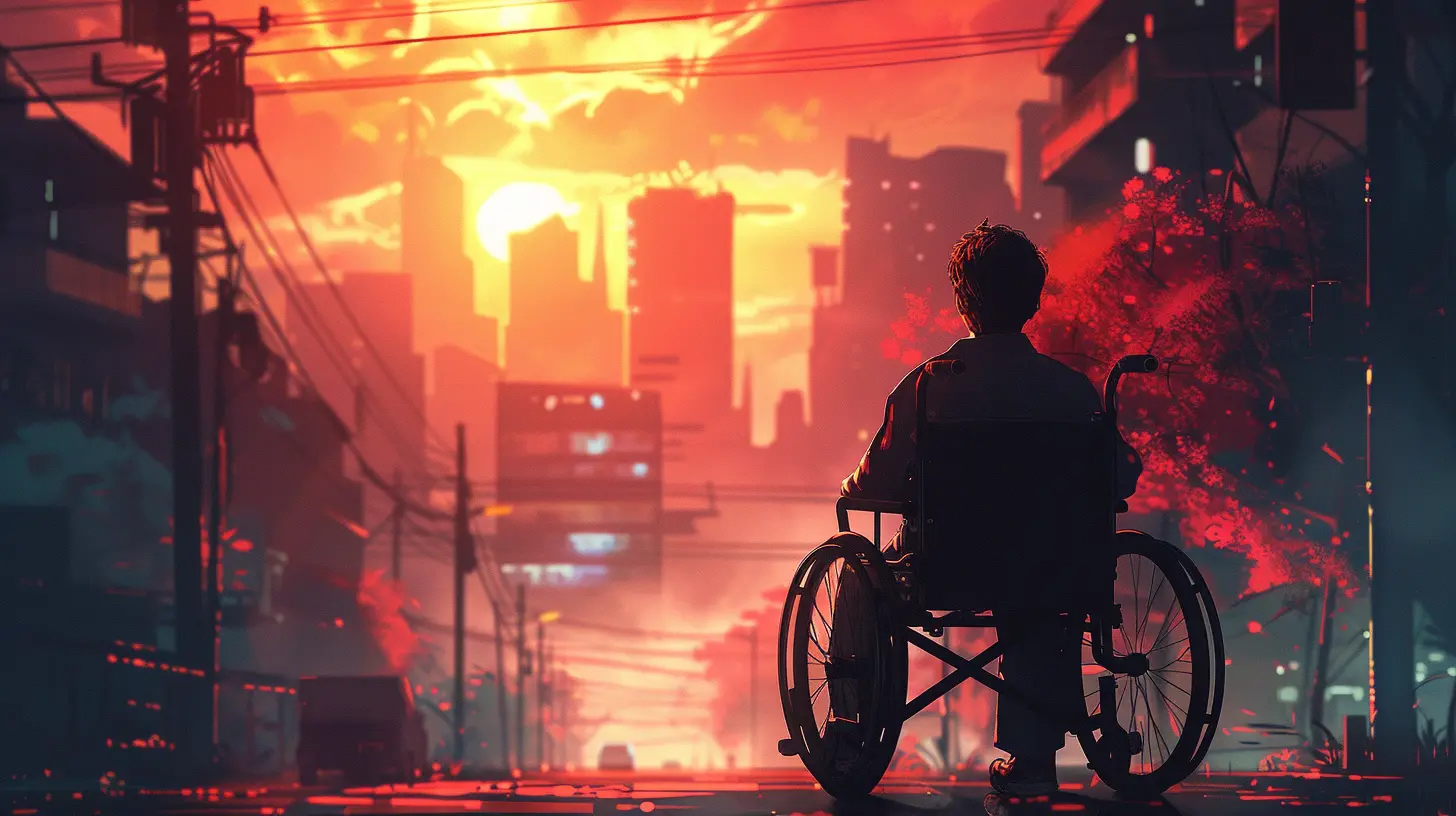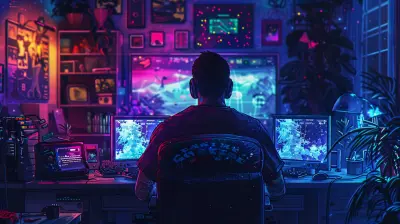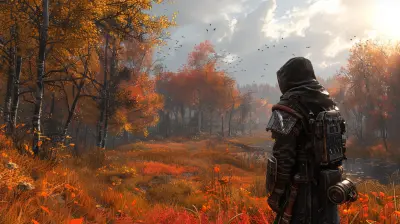Designing for Accessibility: Making Your Game Inclusive
27 August 2025
Hey there, fellow game devs and pixel wizards! Let’s have a little heart-to-heart about something too many of us kinda ignore until someone brings it up with a raised eyebrow — accessibility in games. Yup, that word that sounds both warm and slightly academic. But trust me, we're not diving into a textbook today. We’re talking about how to make your game so inclusive that everyone, and I mean everyone, can get in on the fun — no matter what their abilities are.
Because honestly, if a potato can run "Doom", your game can absolutely accommodate more players too. So let’s break it down, make it silly, make it smart, and most importantly — make it accessible.
Wait, Why Bother with Accessibility?
Okay, let's pause the dev-code and shiny shaders for just a sec. Let’s address the big question in the room:> “Why should I care about accessibility if my game’s niche and only meant for hardcore players who can beat Dark Souls using a toaster?”
Well, my dear digital friend, because accessibility is not just about disabilities. It’s about inclusion. It’s about making sure people with different physical, sensory, and cognitive abilities can enjoy your work.
It’s also — plot twist — good for business. I mean, who doesn’t want more players, glowing reviews, and maybe fewer angry tweets?
So yeah, creating accessible games isn't just a nice thing to do. It's a smart thing. Plus, it makes you a total rockstar in the dev world. 🎸
The Accessibility Buffet: Who Are We Designing For?
Before you whip out your accessibility wand, you need to understand who you'll be enchanting. Let’s introduce you to our lovely cast of characters:🎮 Players With Visual Impairments
Think color blindness, low vision, or full blindness. Some players can’t distinguish red from green, others rely on screen readers or magnification tools.🎮 Players With Hearing Impairments
They might be hard of hearing or deaf. That epic soundtrack you spent 30 hours on? They might not hear it. So subtitles and visual cues are 🔑.🎮 Players With Motor Disabilities
This could range from players missing limbs to those with limited hand mobility, tremors, or muscle fatigue. Button mashing? Yeah, not ideal here.🎮 Players With Cognitive Limitations
This includes conditions like dyslexia, ADHD, autism, or memory challenges. Complexity for the sake of complexity doesn’t do these players any favors.Now imagine trying to play your favorite game… but with oven mitts on, your monitor turned off, and the volume muted. Hard, right? That’s what it's like for many gamers every day.
Let’s Get Practical: How to Actually Design for Accessibility
Time to roll up those sleeves, grab your coffee, and start making your game welcoming to everyone (even your grandma who still calls Mario “that jumping man”).1. 🧱 Start Accessibility in the Design Phase (Don't Slap It On Later!)
Trying to “patch in” accessibility after you’ve built your game is like trying to install an elevator in a treehouse. Possible? Maybe. Practical? Painful.Instead, bake it in from the start. Accessibility should be part of your game’s DNA, not an afterthought duct-taped to the tutorial screen.
> Pro Tip: Make an accessibility checklist for your team right alongside your feature list.
2. 🎨 Color-Coding? Test It With Colorblind Modes
If your game uses only red and green to separate enemies and allies, congratulations — you've already alienated about 8% of men and 0.5% of women on the planet.Fix It:
- Use patterns or icons along with color.- Offer a colorblind mode with different palettes.
- Test your game with tools like Coblis (Color Blindness Simulator) — or just ask a colorblind friend, they'll tell you straight up.
3. 🔊 Subtitles for All (and Make Them Gorgeous!)
Your villain's dramatic monologue loses its edge if players can’t hear it. Subtitles are essential, but not all subtitles are created equal.Here’s What Makes Good Subtitles:
- Adjustable size and font- Speaker labels (Who’s talking? That mysterious voice? The cat?)
- Background shading for readability
- Optional closed captions for sound cues (like ominous humming intensifies)
Because nobody wants to guess if that "distant boom" was thunder, a boss spawn, or their neighbor's questionable plumbing.
4. 🕹️ Customizable Controls? Yes, Please.
Let people play how they want. Maybe someone prefers left-handed controls. Or maybe smashing 'F' repeatedly physically hurts someone.Best Practices:
- Full remapping of inputs- Support for alternative controllers (adaptive controllers, one-handed setups, etc.)
- Toggle instead of hold (because holding buttons for minutes? Wrist pain is not a feature.)
5. 🧩 Keep the UI Clean and Scalable
Nothing sends players running like a cluttered HUD in size 6 font. Accessibility means clarity.Easy Wins:
- Let players resize UI elements- High contrast UI options
- Clear icons and spacing
- Don’t go full “Wall of Text” mode — brevity is your BFF
Trust me, we’re not trying to hack The Matrix here. Keep it clean, simple, and skimmable.
6. 🧠 Reduce Cognitive Load
Making your game challenging is great. Making it needlessly confusing? Not so great.Ease the Mental Gymnastics:
- Offer simple mode names (“Easy, Medium, Hard” beats “Baby Dragon, Warrior, Nightmare Lord” every time)- Use consistent visual language
- Tooltips and tutorials should be skippable but also replayable
- Give players time to read and react. Not everyone processes info the same speed.
Remember, games are meant to be fun — not mental obstacle courses with pop quizzes on lore at every turn.
7. ⌛ Give Options. All The Options.
Options are the croutons of the gaming salad. They make everything better.Want examples? I've got you covered:
- Text-to-speech and speech-to-text
- Adjustable game speed
- Save anywhere (Yes, anywhere. Not just at that cursed checkpoint two bosses back.)
- Skip QTEs or auto-complete them
- Enable or disable screen shaking, flashing, or camera movement
More options = more players = more joy = more pizza (okay maybe not the last one, but you get me).
Testing with Real Players (Spoiler: It's Essential)
You wouldn't launch your game without beta testing, right? Right?!The same goes for accessibility features. You need actual players with diverse backgrounds and needs to test your game.
Seek feedback from accessibility communities, host playtests with disabled players, and be open to constant tweaking. No one gets it perfect on the first try — the key is listening and evolving.
Accessibility Myths You Need to Uninstall
Let’s squash some classic myths quicker than a Goomba under Mario’s shoes.🚫 “Accessibility limits creative freedom”
False. Accessibility is a tool, not a leash. It challenges you to be creative and inclusive. Boom! Double the win.🚫 “Only a small number of people benefit”
Actually, most accessibility features help everyone. Subtitles? Handy in loud environments. Scalable text? Great for tired eyes. Custom controls? Perfect for lefties.🚫 “It’s too expensive or time-consuming”
It’s a lot cheaper to build accessibility in from the start than to overhaul your game later. Think of it like flossing. Annoying now, saves you from future root canals. 🦷Games That Got It Right (Yes, Let’s Shout Them Out!)
The Last of Us Part II
With over 60 accessibility options, it's basically a gold standard. Custom controls? Check. Visual aids? Check. Screen reader support? Triple check.Celeste
A platformer with assist mode that lets players change game speed, invincibility, and stamina. Still emotional. Still award-winning. Still accessible.Forza Horizon 5
Added sign language interpretation in cutscenes. 💯These games prove it: accessible does not mean “easy” or “dumbed down.” It means thoughtful design with everyone in mind.
So… What’s Stopping You?
Whether you’re an indie tinkerer or leading a AAA project, accessibility isn’t just a checkbox. It’s a creative challenge, a moral boost, and a community builder all rolled into one.Think of each feature like offering a seat at your epic digital table. Every new player who can enjoy your game because of you? That’s some real-world XP.
So go ahead — power up your dev tools and start making games that everyone can play. Because when we design for accessibility, we’re not just changing games.
We’re changing lives.
all images in this post were generated using AI tools
Category:
Video Game DesignAuthor:

Whitman Adams
Discussion
rate this article
1 comments
Spencer Torres
Designing for accessibility? That's like adding cheat codes for kindness! Let’s make sure even Grandma can join the quest without accidentally attacking the cat! Remember, it’s not just about leveling up your graphics, but also leveling up the fun for everyone! 🎮✨
August 27, 2025 at 3:32 PM

Whitman Adams
Absolutely! Accessibility is about creating an inclusive experience where everyone, including Grandma, can enjoy the game without barriers. It enhances fun for all players! 🎮✨


